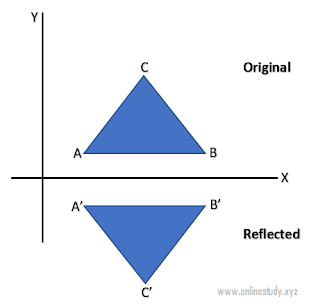
- Reflection And Shearing In Computer Graphics Programming
- Reflection And Shearing In Computer Graphics Programs
Reflection And Shearing In Computer Graphics Programming

View Program for Reflection and Shearing.docx from COMPUTER S 20 at University of Texas. /Program for Reflection and Shearing #include #include #include graphics.h #include. Define the terms with example. The three basic transformations of scaling, rotating, and translating are the most useful and most common. There are some other transformations which are useful in certain applications. Two such transformations are reflection and shear. C program to draw circle in second quadrant in ant. C program to draw circle in second quadrant in clo. C program to draw circle in first quadrant in anti. C program to draw circle in first quadrant in cloc. C program to demonstrate scaling transformation; c program to demonstrate reflection transformation. C program to demonstrate.
Reflection And Shearing In Computer Graphics Programs
#include<graphics.h>
#include<math.h>
#include<conio.h>
#include<stdio.h>
void main()
{
int gd=DETECT,gm;
int i,xmid,ymid,x1,y1,x2,y2,x3,y3,x,y,dy,dx,p,gap=50,temp,option;
int x1dash,x2dash,x3dash,y1dash,y2dash,y3dash;
double theta;
float m;
char str[5];
clrscr();
initgraph(&gd,&gm,'..bgi');
printf('Enter first co-ords of the trianglen');
scanf('%d %d',&x1,&y1);
printf('Enter second co-ords of the trianglen');
scanf('%d %d',&x2,&y2);
printf('Enter third co-ords of the trianglen');
scanf('%d %d',&x3,&y3);
xmid= getmaxx()/2;
ymid= getmaxy()/2;
line(5,ymid,getmaxx()-5,ymid);
line(xmid+3,5,xmid+3,getmaxy()-5);
for( i= xmid+gap;i<getmaxx()-5;i=i+gap)
{
outtextxy(i,ymid-3,'|');
itoa(i-xmid,str,10);
outtextxy(i,ymid+3,str);
}
for( i= ymid-gap;i>5;i=i-gap)
{
outtextxy(xmid,i,'-');
itoa(ymid-i,str,10);
outtextxy(xmid+5,i,str);
}
for( i= xmid-gap;i>5;i=i-gap)
{
outtextxy(i,ymid-3,'|');
itoa(-(xmid-i),str,10);
outtextxy(i-6,ymid+3,str);
}
for( i= ymid+gap;i<getmaxy()-5;i=i+gap)
{
outtextxy(xmid,i,'-');
itoa(-(i-ymid),str,10);
outtextxy(xmid+8,i,str);
}
line(x1+xmid,ymid-y1,x2+xmid,ymid-y2);
line(x2+xmid,ymid-y2,x3+xmid,ymid-y3);
line(x3+xmid,ymid-y3,x1+xmid,ymid-y1);
setcolor(255);
printf('Reflection about n');
printf('X axis : 1n');
printf('Y axis : 2n');
printf('X=Y axis : 3n');
printf(' Enter the option (1-3):');
scanf('%d',&option);
switch( option)
{
case 1: y1=-y1; y2=-y2;y3=-y3; break;
case 2: x1=-x1;x2=-x2;x3=-x3;break;
case 3: y1=-y1; y2=-y2;y3=-y3;
theta= ((double) 90 *3.14f )/(double)180;
x1dash=x1*cos(theta)-y1*sin(theta);
x2dash=x2*cos(theta)-y2*sin(theta);
x3dash=x3*cos(theta)-y3*sin(theta);
y1dash=x1*sin(theta)+y1*cos(theta);
y2dash=x2*sin(theta)+y2*cos(theta);
y3dash=x3*sin(theta)+y3*cos(theta);
x1=x1dash;x2=x2dash;x3=x3dash;
y1=y1dash;y2=y2dash;y3=y3dash;
}
line(x1+xmid,ymid-y1,x2+xmid,ymid-y2);
line(x2+xmid,ymid-y2,x3+xmid,ymid-y3);
line(x3+xmid,ymid-y3,x1+xmid,ymid-y1);
getch();
closegraph();
}
Sample Input :
x1 ,y1 : 50 50
x2, y2 : 100 100
x3 ,y3 :150 50
Comments are closed.